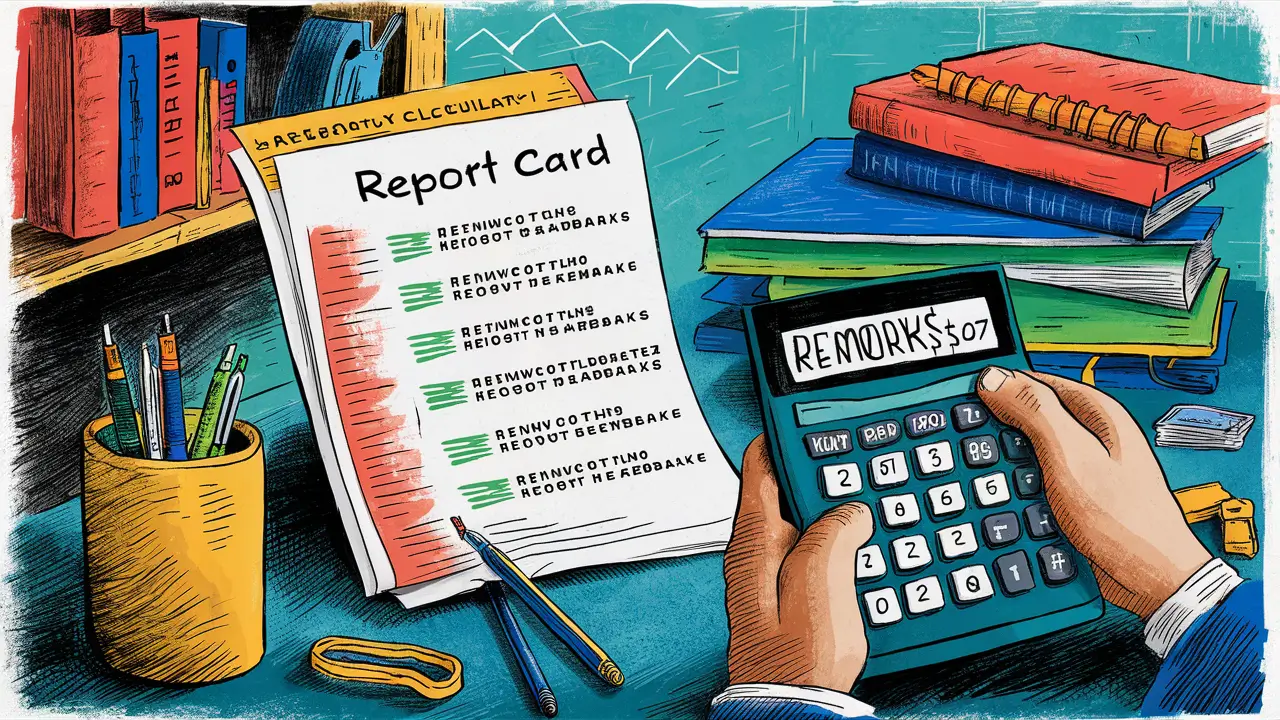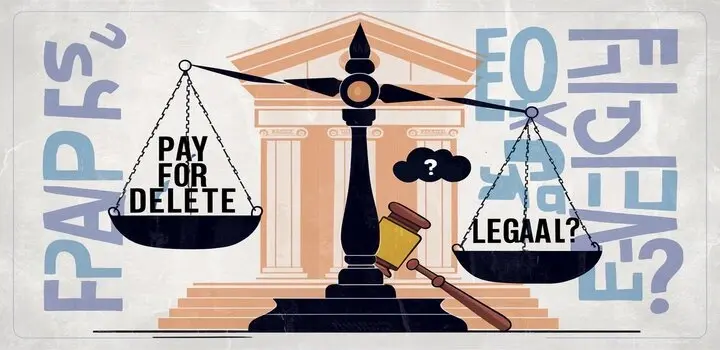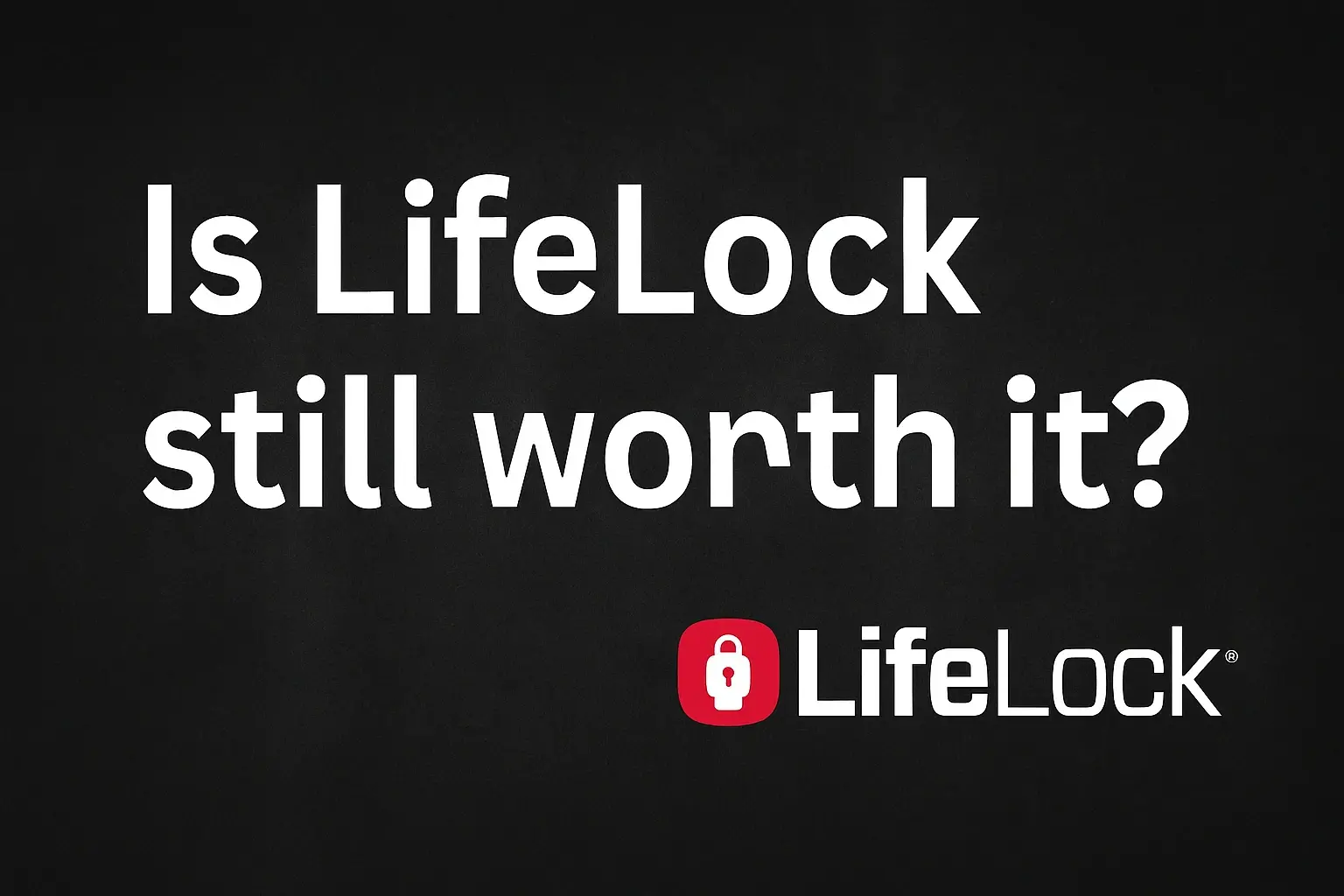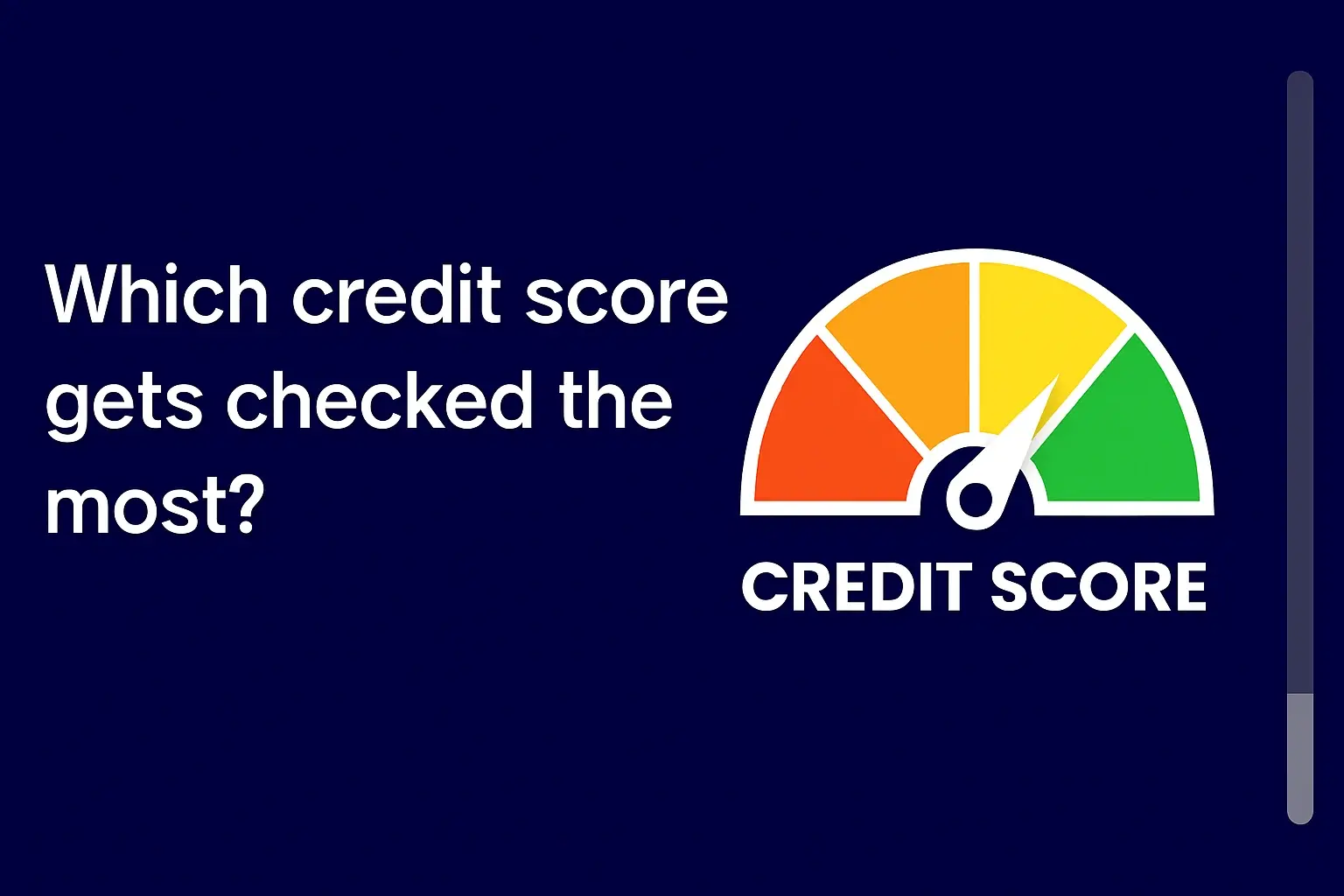-
Posted on: 25 Jul 2024

-
Understanding how derogatory marks on your credit report are handled after payment is crucial for financial health. This comprehensive guide explains the process, timelines, and strategies for improving your credit score, even after settling outstanding debts.
Understanding Derogatory Marks on Your Credit Report
Derogatory marks are negative information that appears on your credit report, significantly impacting your creditworthiness. These marks signal to lenders that you may pose a higher risk of defaulting on future credit obligations. They can range from late payments to more severe issues like bankruptcies and collections. Understanding what constitutes a derogatory mark is the first step in managing and improving your credit. The primary credit bureaus in the United States – Equifax, Experian, and TransUnion – collect this information from lenders and other creditors. This data is then compiled into your credit report, which is used by lenders to assess your credit risk.
These negative entries can make it challenging to obtain new credit, secure a mortgage or car loan, rent an apartment, or even get certain types of insurance or employment. The severity and duration of a derogatory mark's impact depend on its nature and how long it remains on your report. While some marks are temporary and fade over time, others can have a long-lasting effect. The key takeaway is that proactive management and understanding are essential.
What Constitutes a Derogatory Mark?
Several types of negative information can be classified as derogatory marks. These include, but are not limited to:
- Late Payments: Missing a payment deadline, especially by 30 days or more, is the most common derogatory mark. The longer a payment is overdue, the more severe the impact.
- Charge-Offs: When a creditor deems a debt uncollectible and writes it off as a loss. This usually happens after a significant period of non-payment.
- Collections: When a debt is sold to a third-party collection agency, it appears as a collection account on your report.
- Repossessions: When a lender takes back a secured asset (like a car or home) due to non-payment.
- Foreclosures: The legal process by which a lender takes possession of a property due to a borrower's failure to make mortgage payments.
- Bankruptcies: A legal process for individuals or businesses unable to repay their debts. There are different types, such as Chapter 7 and Chapter 13, each with varying durations on a credit report.
- Judgments: A court order that requires a debtor to pay a creditor.
- Liens: A legal claim against a property to secure payment of a debt.
Each of these items tells a story to potential lenders about your financial behavior. The more severe the mark, the more it will weigh down your credit score.
The Role of Credit Bureaus
Equifax, Experian, and TransUnion are the three major credit bureaus that maintain credit reports for consumers. They gather information from a vast network of data furnishers, including banks, credit card companies, mortgage lenders, auto loan providers, and collection agencies. This information is then used to generate credit scores, such as the FICO score and VantageScore, which are widely used by lenders to assess credit risk. The accuracy and completeness of the information on your credit report are paramount, as even minor inaccuracies can have significant consequences. It is advisable to check your credit report regularly from each bureau to ensure its accuracy.
How Derogatory Marks Impact Your Credit Score
Derogatory marks have a substantial negative impact on your credit score. The exact reduction in score varies depending on the type of mark, its severity, how recent it is, and your overall credit profile. Generally, more severe and recent negative items will cause a larger drop in your score. For instance, a bankruptcy will typically have a more profound and long-lasting effect than a single 30-day late payment.
Credit scoring models are designed to predict the likelihood of a borrower defaulting on their debts. Negative information suggests a higher risk, thus lowering the score. Lenders use these scores to make decisions about approving credit applications, determining interest rates, and setting credit limits. A lower credit score can lead to higher interest rates on loans, making borrowing more expensive over time. It can also result in higher insurance premiums, difficulty in securing rental housing, and even impact employment opportunities in certain fields.
Credit Score Reduction Factors
Several factors contribute to how much a derogatory mark affects your credit score:
- Severity of the Derogatory Mark: Bankruptcies, foreclosures, and repossessions are considered more severe than late payments.
- Recency of the Mark: Newer derogatory marks have a greater impact than older ones. As negative items age, their influence on your score diminishes.
- Frequency of Derogatory Marks: Multiple late payments or collection accounts will negatively impact your score more than a single isolated incident.
- Your Existing Credit Profile: A person with an otherwise excellent credit history might see a larger score drop from a single derogatory mark than someone with a mixed credit history. This is because the scoring model has less positive data to balance against the negative.
- Credit Utilization Ratio: While not directly a derogatory mark, high credit utilization can exacerbate the negative impact of other negative items.
Average Score Reduction Estimates (2025)
While precise figures are difficult to provide due to the complexity of credit scoring algorithms, general estimates for 2025 indicate the following potential score reductions:
- 30-day Late Payment: Can lower a score by 60-110 points.
- 60-day Late Payment: Can lower a score by 80-120 points.
- 90-day Late Payment: Can lower a score by 100-130 points.
- Charge-Off: Can lower a score by 100-150 points.
- Collection Account: Can lower a score by 80-120 points.
- Repossession: Can lower a score by 80-120 points.
- Foreclosure: Can lower a score by 100-160 points.
- Bankruptcy (Chapter 7): Can lower a score by 130-220 points.
- Bankruptcy (Chapter 13): Can lower a score by 100-140 points.
These are estimates, and the actual impact can vary significantly. For example, a single 30-day late payment on an account with a perfect payment history might have a less drastic effect than the same late payment on an account that has already had issues.
Do Derogatory Marks Go Away Once Paid? The Truth Revealed
This is the central question many consumers ask, and the answer is nuanced. Generally, **paying off a derogatory mark does not automatically remove it from your credit report.** The derogatory mark itself, such as a late payment or a collection account, will remain on your credit report for a specific period, regardless of whether it's paid or not. This period is dictated by the Fair Credit Reporting Act (FCRA).
However, paying off a debt that has gone to collections or has been charged off is a crucial step towards improving your credit. While the mark may persist, its impact on your score can be lessened once it's marked as "paid" or "settled." Lenders often view a paid collection or charge-off more favorably than an unpaid one.
The FCRA and Reporting Timelines
The FCRA sets limits on how long most negative information can remain on your credit report. These timelines generally begin from the date of the delinquency or the date the account became inactive.
- Late Payments: Typically remain for up to 7 years from the date of the delinquency.
- Charge-Offs: Typically remain for up to 7 years from the date of the charge-off.
- Collections: Typically remain for up to 7 years from the date of the original delinquency that led to the collection. If a collection account is paid, it will remain for 7 years from the original delinquency date, but it will be updated to show as paid.
- Bankruptcies:
- Chapter 7: Up to 10 years from the filing date.
- Chapter 13: Up to 7 years from the filing date.
- Judgments and Liens: Can remain for up to 7 years or longer, depending on state laws and how they are reported.
Once these periods expire, the information is supposed to be automatically removed from your credit report by the credit bureaus.
Impact of Payment on Derogatory Marks
While the mark itself doesn't disappear immediately upon payment, the status change is significant:
- Unpaid Derogatory Marks: These are generally viewed as more serious by lenders, indicating an ongoing financial problem.
- Paid/Settled Derogatory Marks: While still negative, these show that you have taken responsibility for the debt. This can mitigate some of the negative impact, especially for newer negative items. For example, a paid collection account is often less damaging than an unpaid one.
Some credit scoring models, like newer versions of FICO and VantageScore, may give less weight to older, paid derogatory marks compared to unpaid ones. However, the presence of any derogatory mark, paid or unpaid, will still lower your score compared to a clean report.
The Seven-Year Rule and Exceptions
The "seven-year rule" is a common understanding of the FCRA's reporting limits. However, it's important to understand its nuances. The clock generally starts ticking from the date of the *original delinquency* that led to the negative status (e.g., late payment, charge-off, collection). It does not reset simply because you make a payment or settle the debt.
Exceptions:
- Bankruptcies: As noted, these have longer reporting periods (up to 10 years for Chapter 7).
- Inquiries: Hard inquiries typically remain on your report for two years but only affect your score for the first year.
- Inaccurate Information: If a derogatory mark is inaccurate, you can dispute it. If the dispute is successful, it can be removed before its scheduled removal date.
It's also crucial to remember that some information, like positive payment history and credit inquiries, remains on your report for longer periods, contributing to your credit history.
Types of Derogatory Marks and Their Lifespan
The duration a derogatory mark stays on your credit report is a critical factor in its long-term impact. Understanding these timelines helps in planning your credit repair strategy.
Late Payments and Collections
Late Payments: A single 30-day late payment is the least severe derogatory mark. However, even this can significantly lower your score. These typically remain on your report for 7 years from the date of the delinquency. The impact diminishes over time. For example, a 30-day late payment from 6 years ago will have less of an impact than one from 6 months ago.
Collections: When a debt is sent to collections, it's a serious negative mark. The collection account itself will typically remain on your report for 7 years from the date of the original delinquency that led to the collection. Paying a collection account will update its status to "paid collection," which is better than an unpaid one, but the mark itself will still age off after 7 years from the original delinquency.
Charge-Offs and Repossession
Charge-Offs: A charge-off occurs when a creditor gives up on collecting a debt and writes it off as a loss. This is a significant negative mark that usually stays on your report for 7 years from the date of the charge-off. Paying a charge-off will update its status to "paid charge-off," which is preferable to an unpaid one, but the record of the charge-off will remain for the full 7-year period.
Repossession: When a lender repossesses a secured asset (like a car) due to non-payment, it's a severe derogatory mark. This typically remains on your credit report for 7 years from the date of the repossession. The impact is substantial, signaling a failure to meet secured debt obligations.
Foreclosures and Bankruptcies
Foreclosures: A foreclosure is a legal process where a lender reclaims a property due to missed mortgage payments. This is one of the most damaging derogatory marks and typically stays on your credit report for 7 years from the date of the foreclosure. It can significantly impact your ability to obtain future mortgages.
Bankruptcies:
- Chapter 7 Bankruptcy: This is a liquidation bankruptcy. It remains on your credit report for up to 10 years from the filing date. Its impact is profound and long-lasting.
- Chapter 13 Bankruptcy: This is a reorganization bankruptcy where you repay debts over 3-5 years. It typically remains on your credit report for up to 7 years from the filing date. While still serious, it may have a slightly less severe long-term impact than Chapter 7 if managed successfully.
These longer reporting periods highlight the significant consequences of these financial events.
The Payment Process and Credit Reporting
Understanding how payments are reported to credit bureaus is essential, especially when dealing with past-due accounts. The process can seem complex, but it follows specific rules and timelines.
How Payments Are Reported
Creditors report your payment history to the credit bureaus on a monthly basis. This includes information about whether your payments were made on time or if they were late.
- On-Time Payments: These are the bedrock of a good credit score. Consistent on-time payments demonstrate reliability.
- Late Payments: When a payment is 30, 60, 90 days, or more past due, the creditor reports this status. The number of days past due is crucial information for credit scoring models.
- Settled or Paid Debts: When you pay off a debt that was in collections or charged off, the creditor or collection agency reports this to the credit bureaus. The account status will be updated to reflect that it has been paid or settled.
It's important to note that the reporting is done by the data furnisher (the creditor or collection agency) to the credit bureaus. The credit bureaus then compile this information into your credit report.
Payment Status Updates
When you pay a debt that was previously delinquent, charged off, or in collections, the reporting agency is supposed to update the status of that account on your credit report.
- Paid Collection: The account will show a zero balance and be marked as "paid." However, the history of it being a collection account will remain for the full reporting period.
- Paid Charge-Off: Similar to a paid collection, the account will show a zero balance and be marked as "paid." The charge-off history will persist.
These updates are crucial because a "paid" status is generally viewed more favorably by lenders than an "unpaid" status, even though the negative event itself is still recorded.
Negotiating "Pay-for-Delete" Agreements
A "pay-for-delete" is an agreement where a collection agency or creditor agrees to remove a derogatory mark from your credit report entirely in exchange for payment. This is a highly sought-after strategy because it leads to the complete removal of the negative item, not just a status update.
Is it possible? Yes, but it's not guaranteed and requires negotiation. Collection agencies, in particular, may be more willing to agree to this, as they often purchase debt for pennies on the dollar and may be more interested in a quick profit than the long-term reporting of the debt.
How to approach it:
- Verify the Debt: Before negotiating, ensure the debt is valid and within the statute of limitations for your state.
- Negotiate in Writing: Always get any agreement in writing *before* you make a payment. This is crucial for your protection.
- Be Clear on Terms: Specify that the collection agency must remove the item from all three credit bureaus.
- Make Payment: Once you have the written agreement, make the agreed-upon payment.
- Follow Up: After payment, monitor your credit reports to ensure the item has been removed. If not, you have the written agreement to pursue the matter.
Important Note: Many original creditors (banks, credit card companies) are less likely to agree to pay-for-delete arrangements. Collection agencies are your primary target for this strategy.
Strategies for Improving Your Credit After Payment
Paying off derogatory marks is a significant step, but it's only part of the journey to a healthier credit score. A proactive approach to credit management is essential.
Prioritizing Debt Settlement
When you have multiple debts that have resulted in derogatory marks, strategizing which ones to pay first can be beneficial.
- High-Interest Debts: Paying off debts with the highest interest rates can save you money in the long run and free up cash flow.
- Collection Accounts: While the mark remains for 7 years, paying off collections can improve your score more significantly than paying off a recent late payment. Lenders often see unpaid collections as a red flag.
- Debts with Shortest Time Remaining: If a derogatory mark is nearing its removal date (e.g., within a year or two), you might consider focusing on other debts first, as its impact will soon naturally diminish.
The best strategy often involves a combination of these factors, tailored to your specific financial situation.
Monitoring Your Credit Reports
Regularly checking your credit reports from Equifax, Experian, and TransUnion is vital. You are entitled to a free credit report from each bureau annually via AnnualCreditReport.com.
What to look for:
- Accuracy: Ensure all information is correct.
- Updates: Verify that paid debts are updated to "paid" status.
- Removal Dates: Keep track of when derogatory marks are due to fall off your report.
- New Negative Information: Catch any new issues before they significantly impact your score.
Many credit monitoring services offer free or low-cost ways to track your credit score and report changes.
Understanding Credit Utilization
Your credit utilization ratio (CUR) is the amount of credit you're using compared to your total available credit. It's a significant factor in your credit score.
- High CUR: Using a large portion of your available credit can signal to lenders that you are financially strained and may be a higher risk.
- Low CUR: Keeping your CUR low (ideally below 30%, and even better below 10%) demonstrates responsible credit management.
Paying down credit card balances after settling other debts can significantly improve your CUR and, consequently, your credit score.
Negotiating with Creditors for Removal or Mitigation
Beyond "pay-for-delete," there are other negotiation tactics you can employ to mitigate the impact of derogatory marks.
Goodwill Adjustments
If you have a history of on-time payments with a particular creditor, but you experienced a single late payment due to extenuating circumstances, you can request a "goodwill adjustment." This is a request for the creditor to remove the late payment from your credit report as a gesture of goodwill.
How to request:
- Contact the Creditor: Reach out to the customer service department.
- Explain the Situation: Be honest and concise about why the payment was late.
- Highlight Your History: Emphasize your otherwise good payment record with them.
- Make a Clear Request: Ask if they would consider removing the late payment from your credit report.
While not guaranteed, goodwill adjustments are sometimes granted, especially for customers with a long and positive history.
Settlement Negotiations
When dealing with collection agencies or charged-off accounts, you can often negotiate a settlement amount. This means paying less than the full amount owed.
Tips for settlement:
- Know the Debt's Age: If a debt is nearing its statute of limitations for legal action, you may have more negotiation leverage.
- Offer a Percentage: Start with a lower offer (e.g., 30-50% of the balance) and be prepared to negotiate upwards.
- Get It in Writing: As always, ensure any settlement agreement is documented in writing before you pay. The agreement should clearly state that the payment will resolve the debt in full.
A settled debt, even if less than the full amount, is better than an unpaid one.
Dispute Resolution Services
If you believe there's an error on your credit report or you're struggling to negotiate with creditors, consider using a reputable credit repair service. These services can help you dispute inaccuracies, negotiate with creditors, and manage the overall credit repair process. However, be wary of services that promise guaranteed results or charge upfront fees for services that you can perform yourself.
Disputing Inaccurate Derogatory Marks
The FCRA grants you the right to dispute any information on your credit report that you believe is inaccurate. This is a powerful tool for removing incorrect negative items.
The Dispute Process
If you find an error on your credit report, you can initiate a dispute with the credit bureau that provided the report.
- Identify the Error: Clearly note the inaccurate information on your report.
- Gather Evidence: Collect any documentation that supports your claim (e.g., payment receipts, account statements, letters from creditors).
- Submit the Dispute: You can do this online, by mail, or by phone with each credit bureau. It's often best to do it in writing (certified mail) for a clear record.
- Credit Bureau Investigation: The credit bureau has 30 days (sometimes 45) to investigate your dispute. They will contact the data furnisher (the creditor) to verify the information.
- Resolution: If the investigation finds the information to be inaccurate or unsubstantiated, it must be corrected or removed from your report.
Common Inaccuracies to Dispute
- Accounts that aren't yours: Identity theft or clerical errors can lead to accounts appearing on your report that you never opened.
- Incorrect balances or payment statuses: A debt that was paid off but still shows as outstanding, or a payment that was made on time but reported as late.
- Duplicate accounts: The same debt listed multiple times.
- Outdated information: Derogatory marks that should have been removed according to FCRA timelines.
- Incorrect personal information: Errors in your name, address, or Social Security number can sometimes lead to reporting errors.
Working with Data Furnishers
While disputes are filed with credit bureaus, the investigation involves the data furnisher. If you have direct communication with the creditor or collection agency that reported the information, and you can resolve the inaccuracy with them, they can then report the correction to the credit bureaus. This can sometimes be a faster route for resolving simple errors.
Building a Positive Credit History for the Future
Once you've addressed past derogatory marks, the focus shifts to building a strong, positive credit history. This is the most effective long-term strategy for improving your credit score.
Consistent On-Time Payments
This cannot be stressed enough: making all your payments on time, every time, is the single most important factor in building good credit. Set up automatic payments or reminders to ensure you never miss a due date.
Responsible Credit Utilization
Keep your credit card balances low relative to your credit limits. Aim to use no more than 30% of your available credit, and ideally less than 10%. This demonstrates that you can manage credit responsibly without overextending yourself.
Diversifying Your Credit Mix
Having a mix of different types of credit (e.g., credit cards, installment loans like mortgages or auto loans) can positively impact your score, as it shows you can manage various credit products. However, do not open new accounts solely to improve your credit mix if you don't need them.
Length of Credit History
The longer you have had credit accounts open and in good standing, the better. Avoid closing old, unused credit cards if they have no annual fee, as this can shorten your average credit history length.
Secured Credit Cards and Credit-Builder Loans
For individuals with limited credit history or a damaged credit report, secured credit cards and credit-builder loans are excellent tools.
- Secured Credit Cards: Require a cash deposit that typically equals your credit limit. Responsible use and on-time payments are reported to credit bureaus, helping to build positive credit history.
- Credit-Builder Loans: You make payments on a loan that is held in a savings account. Once the loan is fully repaid, you receive the money. The payments are reported to credit bureaus.
These tools provide a pathway to rebuilding credit when traditional credit is inaccessible.
Real-World Examples and Statistics (2025)
To illustrate the impact and management of derogatory marks, let's look at some hypothetical scenarios and relevant 2025 statistics.
Scenario 1: Paid Collection
Background: Sarah had a $1,500 medical bill go to collections. Her credit score was 620. She paid the collection agency $800 in a settlement.
Credit Report Update: The collection account is now marked as "paid" or "settled for less than full amount." The original delinquency date was 3 years ago.
Impact: While the mark remains for another 4 years, the "paid" status is viewed more favorably by lenders than an unpaid collection. Her score might increase by 20-50 points due to the positive update, but the underlying negative history still affects it.
2025 Statistic: According to recent analyses, consumers with one paid collection account may see their FICO scores improve by an average of 25-50 points compared to having an unpaid collection, assuming other credit factors remain constant.
Scenario 2: Multiple Late Payments and Improvement
Background: Mark had three 30-day late payments on his credit cards over the past two years, leading to a score of 580. He has since caught up on all payments and reduced his credit utilization.
Credit Report Update: The late payment notations remain but are aging. His credit utilization is now below 20%.
Impact: As the late payments age and his utilization remains low, his score is gradually improving. He might see a score increase of 50-100 points over 1-2 years due to the diminishing impact of the older late payments and improved utilization.
2025 Statistic: Experian data from early 2025 indicates that consumers who reduce their credit utilization from above 50% to below 20% can see their VantageScore increase by an average of 30-60 points.
Scenario 3: Bankruptcy and Rebuilding
Background: Emily went through a Chapter 7 bankruptcy 4 years ago. The bankruptcy is scheduled to remain on her report for 6 more years. Her score is currently 550.
Credit Report Update: The bankruptcy remains, but Emily has consistently made on-time payments on a secured credit card for the past 3 years.
Impact: Despite the bankruptcy, her consistent positive behavior is slowly rebuilding her credit. She may see a gradual increase in her score as the positive history outweighs the aging negative mark.
2025 Statistic: Research suggests that individuals who consistently practice positive credit behaviors after bankruptcy can see their credit scores rise by as much as 100-150 points within 2-3 years, and potentially reach prime territory within 7-10 years.
General Credit Score Trends (2025)
In 2025, credit scoring models continue to evolve, with a greater emphasis on payment history and credit utilization. The impact of derogatory marks remains significant, but the ability to recover through responsible financial behavior is also highlighted. The average credit score in the U.S. in early 2025 hovers around 715, but this figure is heavily influenced by the number of individuals with excellent credit. A significant portion of the population still struggles with lower scores due to past financial difficulties.
Conclusion: Your Path to Better Credit
The question of whether derogatory marks disappear once paid is a common one, and the answer is that while the mark itself typically remains for its legally defined period (usually 7 years, or 10 for certain bankruptcies), its impact can be significantly mitigated by paying it off. A paid collection or charge-off is viewed much more favorably by lenders than an unpaid one, and this positive update can lead to score improvements.
Your journey to better credit after dealing with derogatory marks involves several key steps: understanding the reporting timelines, negotiating with creditors where possible (especially for pay-for-delete agreements), diligently disputing any inaccuracies, and most importantly, consistently building a positive credit history. Prioritizing on-time payments, managing credit utilization responsibly, and demonstrating long-term financial discipline are the most effective strategies for repairing and enhancing your creditworthiness.
While the road to a pristine credit report can be long, especially after severe derogatory events, it is achievable. By staying informed, proactive, and disciplined, you can overcome past financial challenges and build a strong financial future. Remember to monitor your credit reports regularly and leverage tools like secured credit cards and credit-builder loans if needed.











